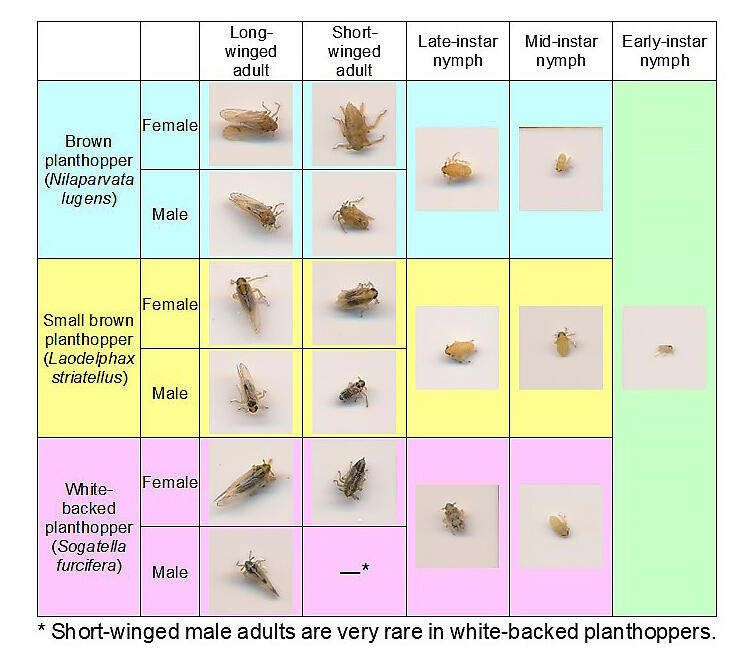Members of a research group, including senior researcher Tomohiko Takayama and others of the Kyushu Okinawa Agricultural Research Center, National Agriculture and Food Research Organization (NARO), announced on January 13 that they have developed an AI system that automatically recognizes the number, type, growth stage, and other characteristics of Asian rice planthoppers (Hemiptera: Delphacidae), which are designated as pests according to the Plant Protection Act, from images on a survey board. Even adult Asian rice planthoppers 5 mm in size could be classified into all 18 categories with an accuracy of 90% or higher, and the number of insects could be counted. This classification typically requires an hour or more and is performed visually by a skilled researcher using a single survey board. However, with the help of AI, the classification, including imaging of the survey board, can be completed within 3-4 minutes. The members of the research group said that they aim to further improve its accuracy through verification tests in the future. It is expected that this will lead to less laborious and faster investigations of Asian rice planthoppers as well as accurate control and damage prediction.
Asian rice planthoppers feed on rice stems and leaves, causing a large decrease in yield, death, growth suppression, and transmission of viral diseases. For the purpose of stable rice production, the Ministry of Agriculture, Forestry and Fisheries has recognized Nilaparvata lugens and Sogatella furcifera (from Vietnam and China) as well as Laodelphax striatellus (which is found abroad and is also distributed in Japan) as "designated pests" under the Plant Protection Act. In cooperation with various prefectures, it has issued alerts and warnings to producers when damage due to frequent outbreaks is predicted through the outbreak prediction project. For this reason, surveys of the outbreak situation after arrival are conducted by prefectural pest control stations at approximately 3,000 points nationwide at regular intervals during the rice growing period (at least twice per month).
In the same survey, the survey board coated with the adhesive is placed at the root of the plant, the insects on the leaves and stems are knocked off, and the insects on the survey board are visually assessed by the surveyor. Since the type and degree of damage vary depending on the type and growth stage of planthoppers, a total of 18 classifications are performed, including those based on species, adult males and females, growth stages, and long and short wings. Meanwhile, experience is required to make judgments with high accuracy, and there is a concern that there will be a shortage of human resources in the field.

Provided by NARO
The AI system developed in this study recognized three types of Asian rice planthoppers on the survey board with an average accuracy of 90% or higher. Nilaparvata lugens, which causes particularly severe damage, can be recognized with an accuracy of 95% or higher, which is equivalent to the accuracy of recognition by a skilled investigator. In addition to classification, it is possible to output images with the number of each classification and the classification name. The training data were generated based on Asian rice planthoppers found in paddy fields of the test field (Kumamoto Prefecture) in 2019-2020 in the same way as in the actual survey, followed by creating high-definition images with a flatbed scanner and performing 18 classifications using microscopy and PCR. It took 300 hours to accumulate learning data for approximately 16,000 images.
The AI system was developed by training these learning data for approximately 120 hours with an object detection AI program that uses deep learning using multiple GPUs of the NARO AI research supercomputer "Shiho". The current average accuracy is approximately 90%, but the research group aims to improve the overall accuracy to approximately 95% by repeating verification tests in the future and distribute this technology nationwide. If this system becomes widespread, it is expected to lead to consistently accurate predictions.
This article has been translated by JST with permission from The Science News Ltd.(https://sci-news.co.jp/). Unauthorized reproduction of the article and photographs is prohibited.




